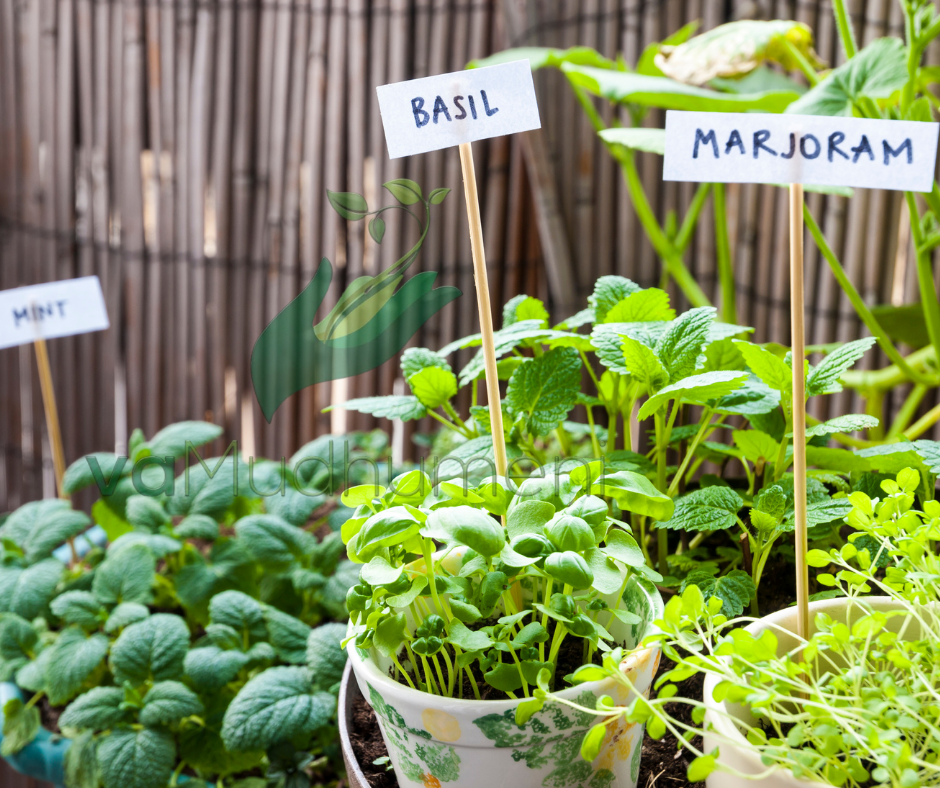By Ruvimbo Jeche
Herbs are plants used whole or in part for flavor, but many of these same herbs are also used for fragrance, health, ornament, and many other uses. References in the Bible and documents from medieval monasteries show that herbs were used by most households, including those of wealthy lords and monks. Over the years, use of herbs declined, and until recently they were relegated to a small patch growing by the back yard. Today, herbs are again recognized as useful plants that make flavorful additions to culinary dishes and attractive features in gardens.
Most herbs prefer well-drained soil and a sunny location. While only a few herbs prefer full shade, many will grow well with afternoon shade. Add organic matter if your soil is heavy or compacted. Herbs usually suffer from few pest or fungal problems and require only minimal watering when established (perennials are established by the second growing season). Fertilizer is also unnecessary for most herbs unless frequent, heavy harvests are desired. Herbs can be grown in a designated bed, as part of a vegetable plot, or in a perennial flower border.
The final location of the herbs may also be related to their ultimate use: a kitchen garden may be near the back door, a moonlight garden near a porch or screen room, or scented herbs near a pathway. As with other garden plants, herbs can be classified as annual, biennial, or perennial. Annual herbs produce foliage, flowers, and seed in one growing season and then die (eg Basil and dill). A few herbs are biennial. Biennials form leaves in the first growing season and flowers and seed in the second season, then die (eg parsley). Most culinary herbs are perennials and these include chives, mint and rosemary. Perennials live more than two growing seasons. Perennials grown from seed may grow slowly the first year but gain vigor and maturity in the second year. The herbaceous perennial will die back over the winter and return in the spring. Woody perennials such as lavender have stems that survive and continue to grow from year to year.
Gardeners can grow herbs around the garden to help keep insects away from their crops. Some herbs can be used to make sprays to kill or repel insects. Cutting the leaves of herbs such as rosemary, lavender and basil and using the cut leaves for mulch around plant beds helps to keep away crawling insects. Herbs can be grown in containers near windows to help repel flies and mosquitoes. They can be grown in containers near seedlings to protect them from pests.
Place dried herb leaves (especially lavender leaves or vetiver roots) at the back of food cupboards or clothes cupboards to help repel ants and cockroaches and moths. To protect stored seeds or grains from weevils mix them with dried herb leaves and wood ash (mint and eucalyptus leaves) Herbs can be eaten raw or cooked, to add flavor to food. Some can be dried such as rosemary, marjoram, basil, chilli. Others may be preserved in oil such as basil, garlic and chilli. Fresh or lightly cooked herbs add flavor and extra vitamins and minerals to the meal particularly vitamin C and calcium. Some herbs are used to make flavored teas such as mint, lemon verbena, and lemon grass. Growing herbs is ideal for healthy cooking and wealthy farming.

